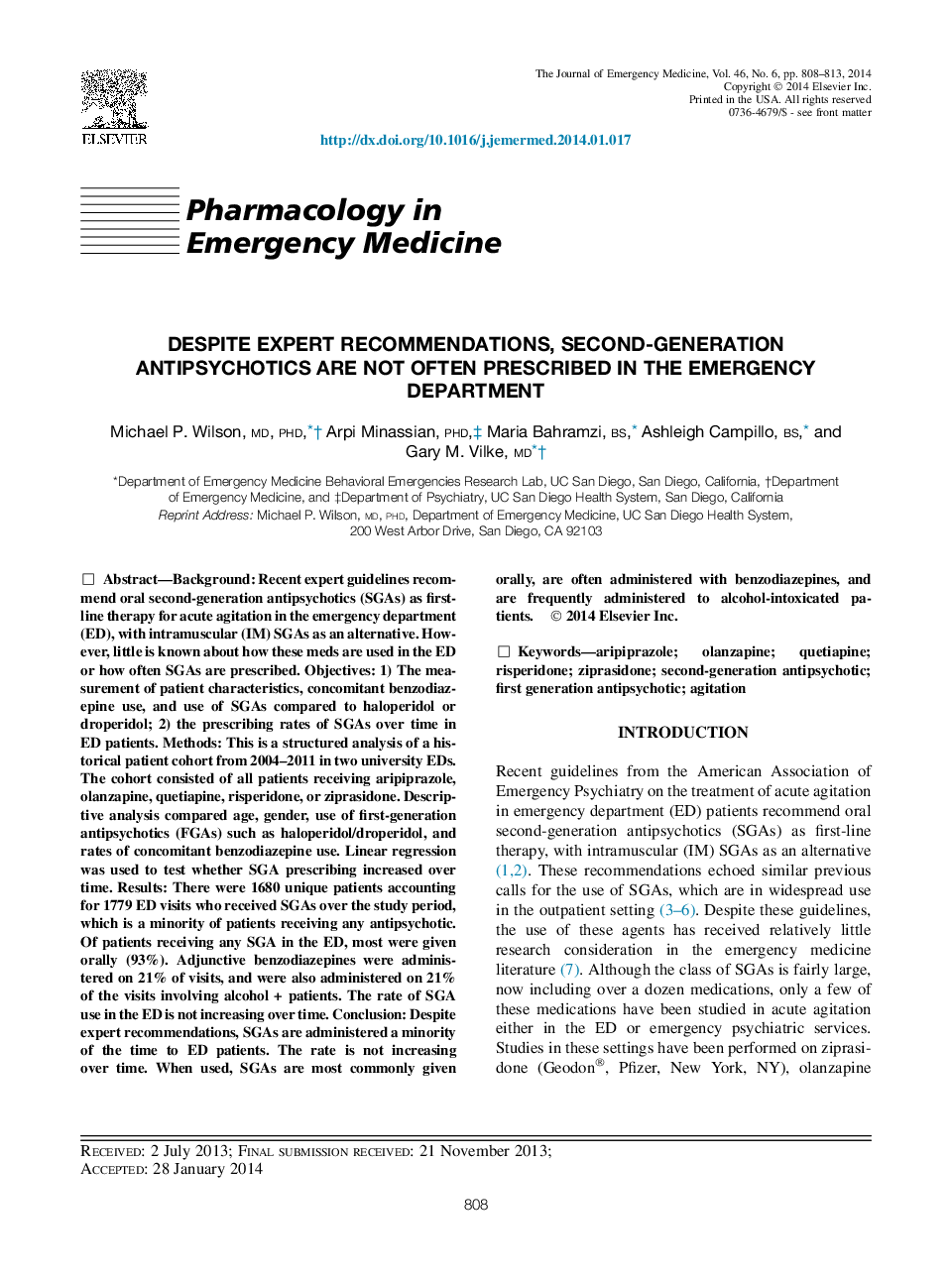| Article ID | Journal | Published Year | Pages | File Type |
|---|---|---|---|---|
| 3247202 | The Journal of Emergency Medicine | 2014 | 6 Pages |
BackgroundRecent expert guidelines recommend oral second-generation antipsychotics (SGAs) as first-line therapy for acute agitation in the emergency department (ED), with intramuscular (IM) SGAs as an alternative. However, little is known about how these meds are used in the ED or how often SGAs are prescribed.Objectives1) The measurement of patient characteristics, concomitant benzodiazepine use, and use of SGAs compared to haloperidol or droperidol; 2) the prescribing rates of SGAs over time in ED patients.MethodsThis is a structured analysis of a historical patient cohort from 2004–2011 in two university EDs. The cohort consisted of all patients receiving aripiprazole, olanzapine, quetiapine, risperidone, or ziprasidone. Descriptive analysis compared age, gender, use of first-generation antipsychotics (FGAs) such as haloperidol/droperidol, and rates of concomitant benzodiazepine use. Linear regression was used to test whether SGA prescribing increased over time.ResultsThere were 1680 unique patients accounting for 1779 ED visits who received SGAs over the study period, which is a minority of patients receiving any antipsychotic. Of patients receiving any SGA in the ED, most were given orally (93%). Adjunctive benzodiazepines were administered on 21% of visits, and were also administered on 21% of the visits involving alcohol + patients. The rate of SGA use in the ED is not increasing over time.ConclusionDespite expert recommendations, SGAs are administered a minority of the time to ED patients. The rate is not increasing over time. When used, SGAs are most commonly given orally, are often administered with benzodiazepines, and are frequently administered to alcohol-intoxicated patients.
